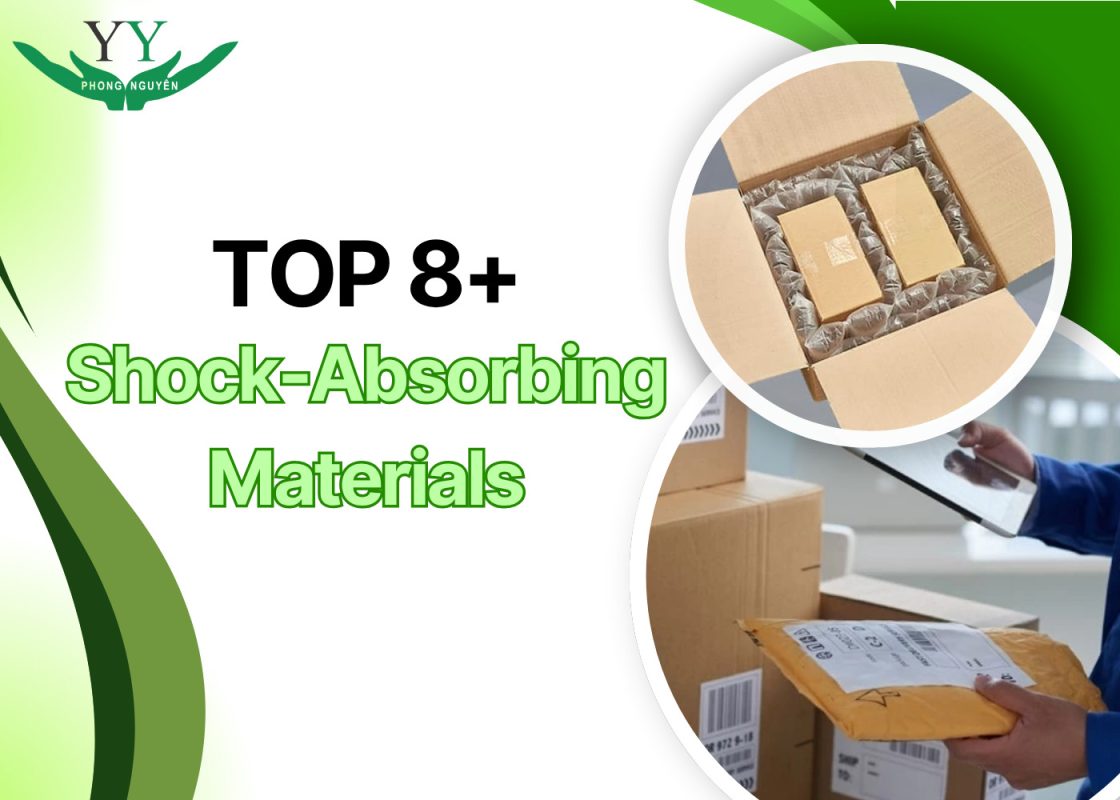In the manufacturing industry, packaging is not just the final step but also a crucial factor in protecting products from risks during transportation. One of the most important elements is shock-absorbing materials, which help minimize the impact of collisions, vibrations, and environmental factors. With the wide variety of packaging solutions available today, choosing the right shock-absorbing material becomes a key decision in ensuring optimal product protection.
In this article, Phong Nguyen will introduce you to the top 8+ effective shock-absorbing materials and explain why they are the top choice in ensuring the safety and integrity of goods during transportation.
What are shock-absorbing materials?
Shock-absorbing materials are specialized substances used during packaging that serve to absorb and disperse impact forces. They help protect goods from physical impacts such as vibrations, drops, compression, or collisions throughout the shipping, warehousing, and distribution processes. These materials typically have good elasticity, the ability to recover after impact, and are lightweight, which helps reduce the overall weight of the package.
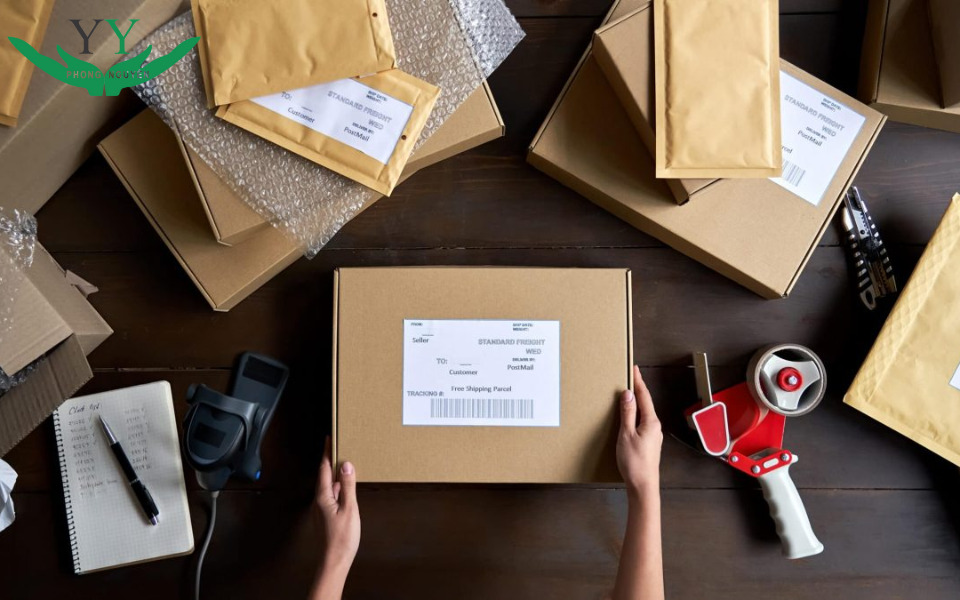
Additionally, they can be easily shaped to fit the size and shape of the product, creating an optimal protective layer. The main goal of these materials is to keep the product stable inside the packaging, preventing shifting, cracking, or deformation—thereby minimizing damage and enhancing the reliability and professionalism of the shipping provider.
The importance of shock-absorbing materials in packaging
Packaging is not merely about wrapping the product; it plays a critical role in maintaining product quality, protecting brand reputation, and optimizing transportation costs. Here are the key reasons why shock-absorbing materials are extremely important:
Protecting goods from damage
During transportation, products are subjected to various physical impacts such as vibration, collision, or drops, which can easily cause damage—especially to fragile items like electronics, glass, or ceramics. To protect products from these risks, shock-absorbing materials are essential for absorbing and dispersing impact forces, ensuring the product remains intact. This significantly reduces potential losses and protects both product quality and brand reputation.

Reducing return rates and complaints
Products that arrive damaged not only lower brand credibility but also incur high costs for returns and replacements, potentially resulting in the loss of valuable customers. Using shock-absorbing materials helps minimize this risk and ensures products arrive in perfect condition. As a result, businesses can maintain customer trust and loyalty while enhancing the overall shopping experience.

Optimizing transportation and storage costs
A sturdy shock-absorbing package that provides excellent protection for products not only creates a strong first impression but also demonstrates that the business values quality and customer satisfaction. Well-protected products also enhance brand image, encouraging customers to return.
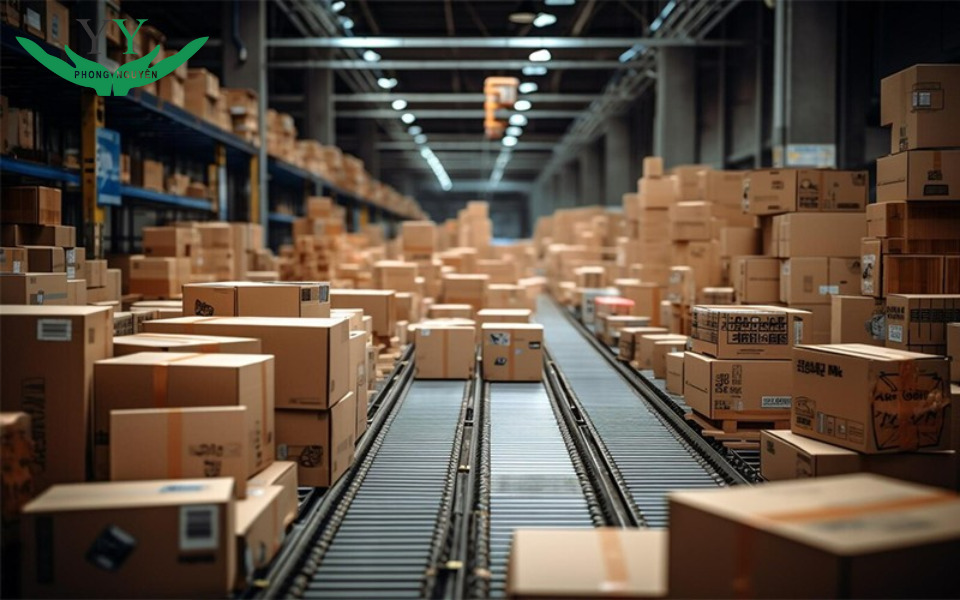
Enhancing customer experience and brand image
A well-secured, protective package not only creates a strong first impression but also demonstrates that a business values product quality and customer satisfaction. Well-protected products also contribute to a more professional brand image, encouraging repeat purchases.
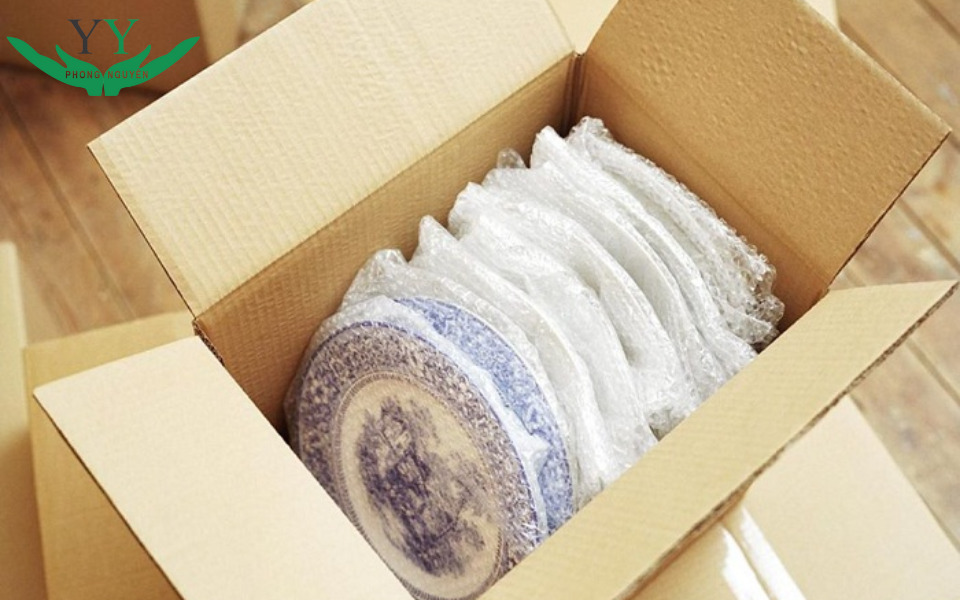
Ensuring compliance with international standards and regulations
Especially in the export sector, using standard-compliant shock-absorbing materials is a mandatory requirement to meet international packaging standards such as ISO, ASTM, and ISTA. This not only ensures safety but also helps businesses maintain credibility in global markets.
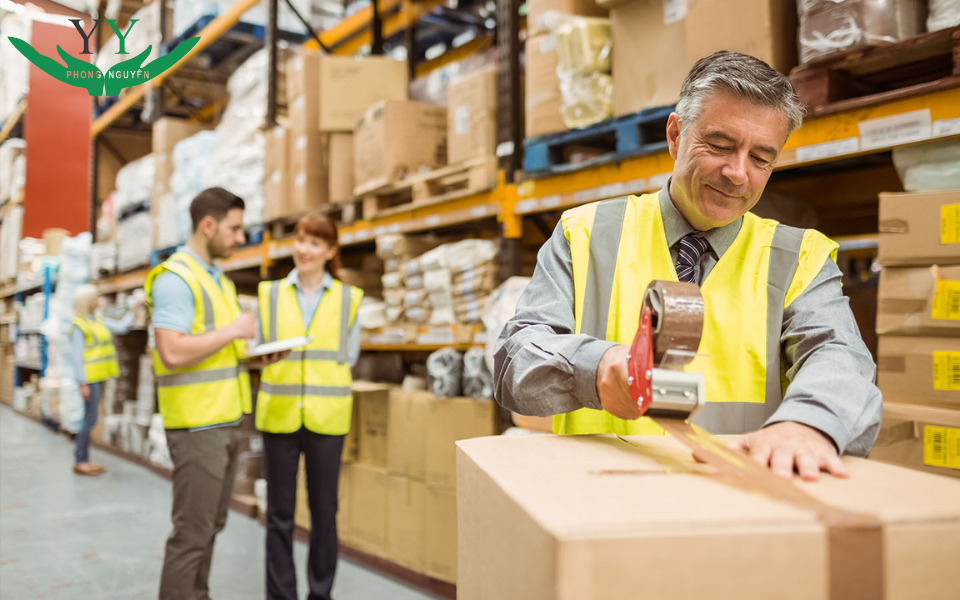
TOP 8+ most popular shock-absorbing materials for packaging today
Below are some of the most commonly used shock-absorbing materials today, each with its own characteristics suited to specific packaging needs.
Bubble wrap
Bubble wrap is a packaging material consisting of two layers of polyethylene plastic with air bubbles inside. It acts as a cushion to reduce impact and distribute force. Due to its light weight, ease of cutting, and reusability, it is a popular choice for protecting electronics, fragile items, furniture, and products in e-commerce.
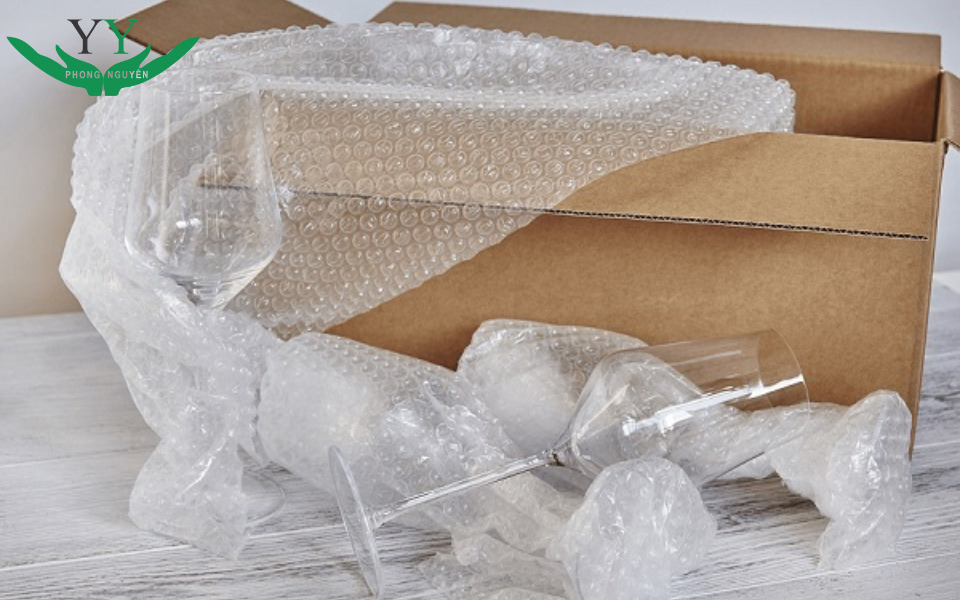
PE Foam
PE foam is made from closed-cell polyethylene foam, available in sheet, roll, or custom-cut forms. This material stands out for its high elasticity, resistance to deformation, thermal insulation, and moisture resistance. It is commonly used for lining electronics and medical devices or forming into protective bags and inserts for complex-shaped items.

EPS Beads (Expanded Polystyrene)
EPS beads (short for Expanded Polystyrene) are small, lightweight particles, typically spherical in shape, used to fill voids in packaging boxes. EPS is notable for its ultra-lightweight nature, helping reduce shipping costs while still offering protection against impact. As such, EPS is an ideal solution for packaging glassware, decorative items, or combining with cardboard boxes for export shipments.
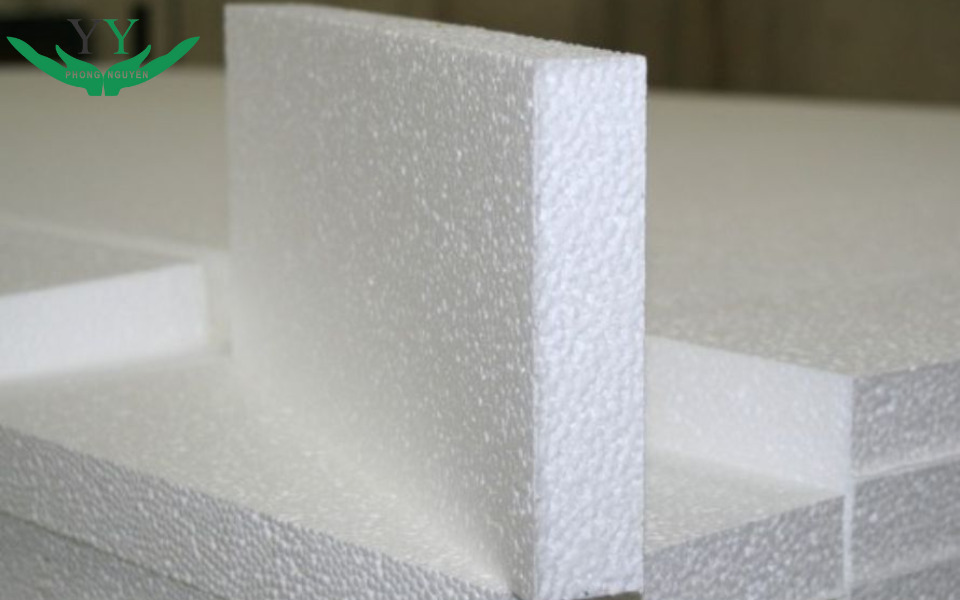
EVA Foam Sheets (Ethylene Vinyl Acetate)
This high-elasticity material is known for its outstanding shock resistance, impact absorption, and abrasion resistance. Compared to PE foam, EVA is more durable and easily cut with CNC for custom shapes. It’s an ideal choice for packaging high-tech products such as cameras, precision machinery, mechanical parts, and premium gift boxes, offering both protection and aesthetic value.
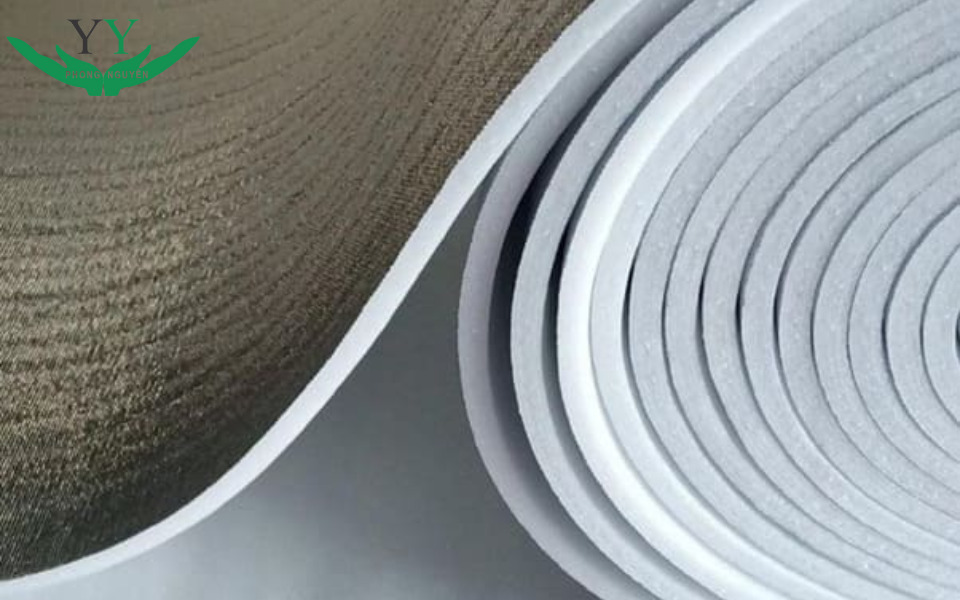
Shredded Kraft Paper
Shredded Kraft paper (crinkle paper) is an eco-friendly, shock-absorbing material made into fibrous form with natural elasticity. It is a perfect choice for packing lightweight to medium-weight products such as gifts, cosmetics, and handmade goods. Besides mild shock protection, kraft paper also enhances packaging aesthetics and serves as a sustainable alternative to plastic in eco-friendly campaigns.
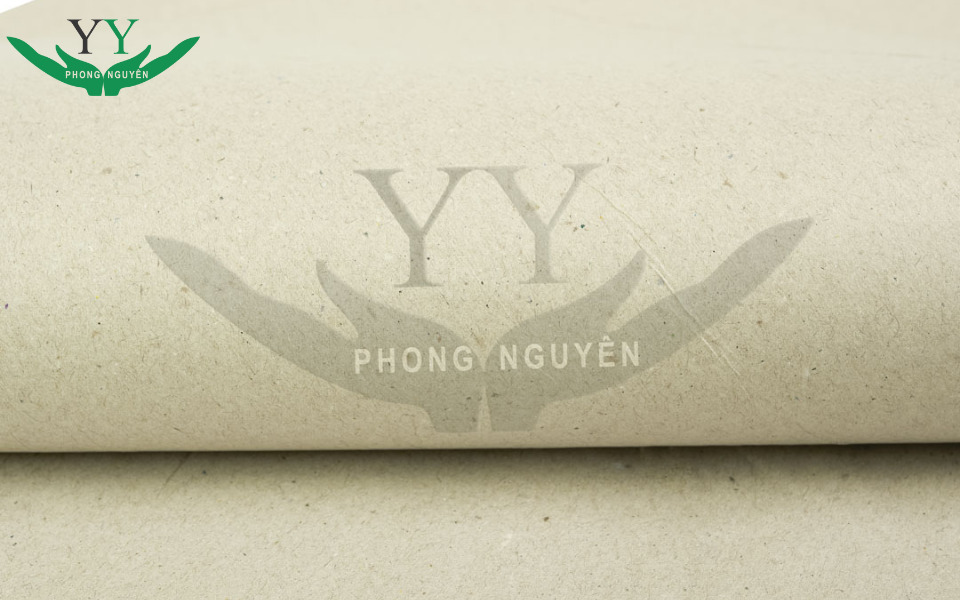
Molded Pulp
Molded fiber is a packaging material made from recycled paper, biodegradable and environmentally friendly. Thanks to its tightly bonded natural fiber structure and precise molding design, this material offers excellent shock resistance. It allows the packaging to snugly fit the product, providing maximum protection against external impacts and ensuring safety during transportation.
From familiar egg trays to sophisticated packaging for electronic devices, molded pulp is gradually replacing traditional plastic foam, offering a sustainable packaging solution without compromising on aesthetics or functionality.
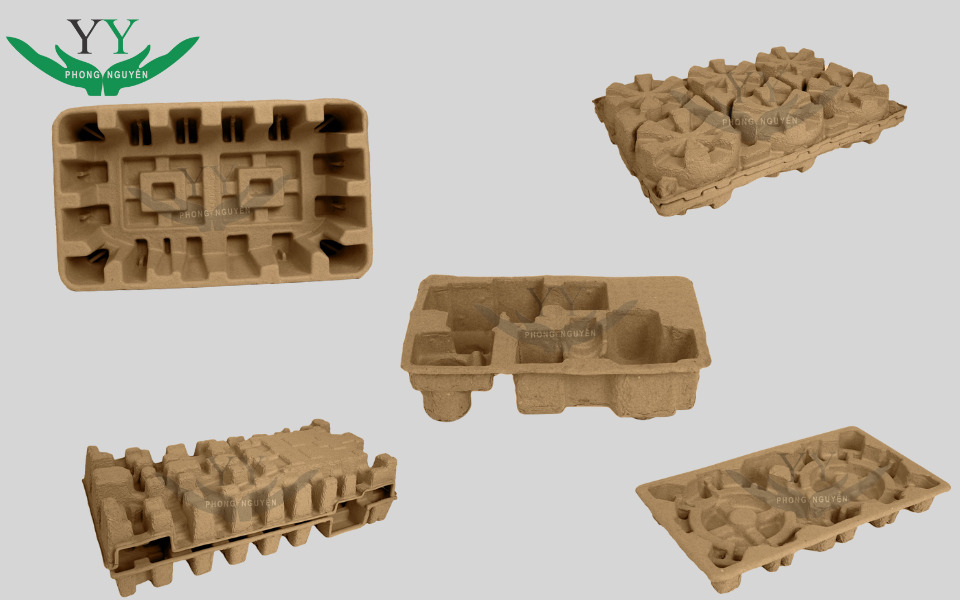
Honeycomb Board
Honeycomb board is a paper-based material with a honeycomb core structure sandwiched between two rigid paper layers, providing excellent load-bearing capacity while remaining lightweight. This material is highly rated for its impact resistance, scratch prevention, and ability to reduce product deformation.
Honeycomb boards are ideal for packaging heavy items such as machinery, furniture, or refrigerators or for use as frame padding for paper pallets and display shelves—an effective substitute for industrial wood.
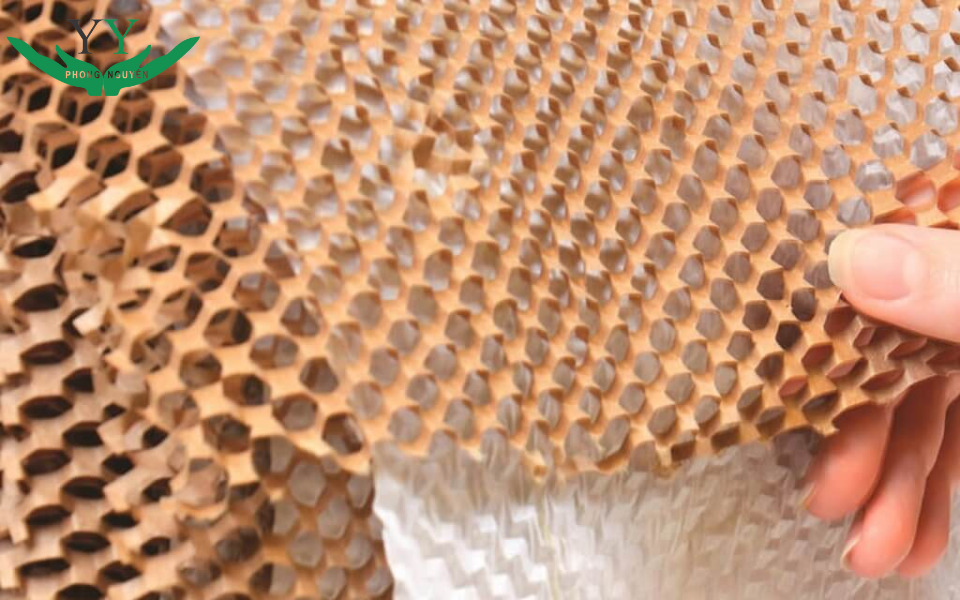
Air Column Bags
Air column bags are a modern shock-absorbing packaging solution made of multiple interconnected air chambers, typically from PE or PA plastic for high durability. Once inflated, the bag conforms tightly to the product, providing 360-degree cushioning and minimizing impact during transport.
These bags are lightweight, space-saving when not in use, and easily customizable to the size of the product. They are often used to package glass bottles, cosmetics, electronics, wine, and premium export products.
You may also like: What Is Handbag Stuffing Paper And Handbag Stuffing Tips
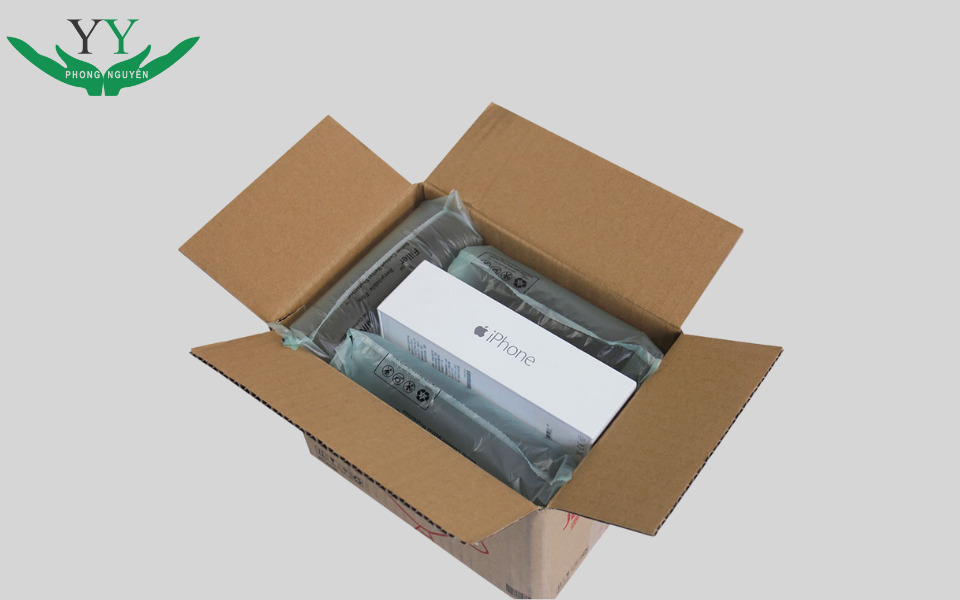
Conclusion
Choosing the right shock-absorbing material not only ensures the safety of goods throughout the transportation process but also helps businesses elevate brand image and reduce logistics costs. When making a selection, it’s important to consider impact resistance, cost, durability, and recyclability—especially amid the growing trend toward sustainable packaging. Phong Nguyen hopes this article has provided you with valuable insights. See you again in future posts!

